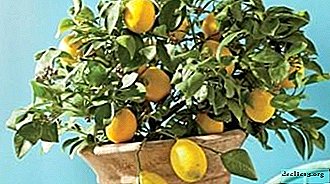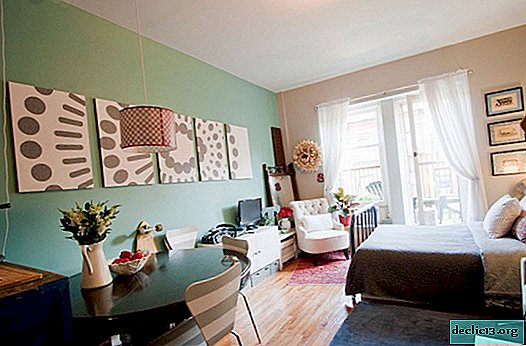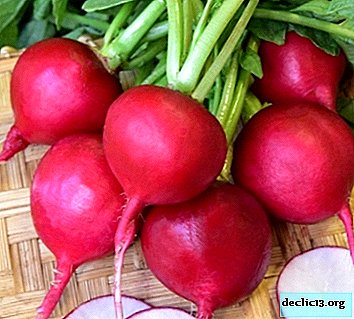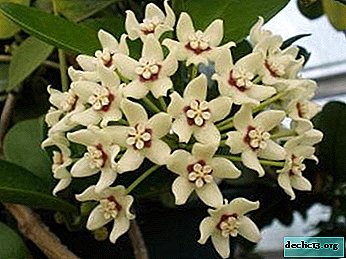About the evergreen Pavlovsky lemon. Home care, plant propagation, diseases and pests

Pavlovsky lemon is an evergreen plant with tasty and healthy fruits. For unpretentiousness in care and beautiful flowering, it is common among gardeners.
It fits perfectly into any interior and becomes its decoration. We will tell all the details about this amazing plant and share the secrets of its cultivation, as well as show how Pavlovsky lemon, its flowers and fruits look in the photo.
Botanical Description
Pavlovsky lemon - compact plant, the Rutov family. In 1860, the Russian merchant I.S. Karachistov traveled around Turkey and it was there that he was presented with a gift of lemon seedlings. After returning home to the city of Pavlovo on the Oka, he transferred them to his relative E.D. Elagin, who decided to grow them on the window. Soon, lemon decorated the homes of many residents of this city.
In Soviet times, scientists who studied it became interested in the plant and issued a large number of publications. After which it became popular throughout Russia and began to use it in an industrial-demonstrative economy.
Description of the appearance, flowering and fruits and photos of the plant
The plant reaches a height of 1-1.5 meters. The crown is round, in young shoots of a bright green hue, in adults it is gray-green in color. The branches are down, there are both with thorns and without thorns. The leaves are large, of various shapes from oval to broad lanceolate. The leaf blade is wedge-shaped, slightly pointed up, of a deep green color.
Lemon Pavlovsky blooms 2 times a year in spring and autumn. The flowers are large, five-membered, white with yellow stamens. Calyx small, leafy. The formation of the buds lasts 30-40 days.3 years after rooting of the cuttings, fruits up to 10 cm appear. They are smooth, bright yellow in color and with a skin of 5 mm. On one bush there are about 7-10 fruits. 5-7 seeds in one fruit.



What is the difference from other species?
Lemon Pavlovsky is a self-pollinated plant. Unlike other species, it can bloom and set fruits throughout the year. At the same time, the fruit is juicy, very sour and fragrant. If you do not break immediately, they can remain on the branches for more than a year. In addition to beautiful flowering, the leaves of the plant evaporate ether, which cleans the air of germs.
Home Care
The plant is unpretentious in care and is well adapted to room conditions. The main thing is to follow certain maintenance rules.
Temperature
The optimum temperature of the lemon content in the spring and summer is 18-20 degrees. In the winter season, it is lowered to 13-15 degrees. But if it is not possible to keep the plant cool, then the lemon is additionally highlighted and watered with warm water, heated to 30 degrees.
Watering
Water the tree sparingly and regularly. In the summer, after drying of the topsoil. On hot, sultry days daily. At the same time, water should drain into the pan, after which it is drained. During the rest period, the frequency and abundance of irrigation is reduced, approximately once every 6-9 days. Water taken settled to room temperature or filtered.
Lemon loves high humidity, so the plant is sprayed daily. It also helps to improve the taste of the fruit. In winter, spraying is optional, just wipe the leaves with a damp cloth.
Shine
Plant likes bright diffused light. Feels good on the eastern and western windows. On the southern windowsills, lemon is shaded from direct sunlight. During the dormant period, they are installed at a distance of 50-60 cm above the phytolamp tree.
Pavlovsky lemon does not respond well to temperature changes and drafts, since a sharp change in regime can lead to dropping leaves and death, so a flowerpot with a flower is not allowed out into the open.
Priming
 The plant develops well in light, fertile, loose soil, which allows air and moisture to pass through.
The plant develops well in light, fertile, loose soil, which allows air and moisture to pass through.
Ready-made substrate for citrus can be purchased at the store.. Or cook yourself, for this in equal proportions mix:
- turf and leaf land;
- sand;
- peat;
- humus.
Pruning
To give the plant a decorative and better fruiting, the formation of the crown is carried out. The procedure consists of the following steps:
- At the end of February, the top of the plant is cut off, while 3-4 leaves are left.
- The next year, new branches are formed, which also cut the tops and leave 2 leaves.
- In the future, 5–9 main branches will be obtained, on which there will be branches of 3-4 orders.
Fruiting, just happens on the branches of 4 orders. When sanitary pruning, dried, damaged and yellow leaves are removed.
The first 2 years, all the flowers from the lemon are removed and prevented from tying up, since the root system is still weak. In the future, every year the number of flowers left is increased.Top dressing
The first top dressing is carried out when the tree reaches 2 years. For this, mineral complex fertilizers for citrus are acquired. Before applying, the lemon is abundantly watered, this protects the root system from burns. You can make organic fertilizers from chicken manure or manure.
Pot
Pots made of ceramics, wood or plastic are suitable for growing the Pavlovsky estuary. Choose containers in which the bottom is narrow, and the diameter of the upper part is equal to the height. When transplanting plants, the pot is taken 2-3 cm more than the previous one.
Transfer
 Transplant lemon into a new pot every 2 yearsas soon as the root system takes up all the space in the pot. Perform the procedure in early spring. The process is as follows:
Transplant lemon into a new pot every 2 yearsas soon as the root system takes up all the space in the pot. Perform the procedure in early spring. The process is as follows:
- A drainage layer of expanded clay or river pebbles is laid in a new container, a little soil is poured on top.
- The lemon is carefully removed from the flowerpot, the roots are shaken off the ground and inspected for rotten roots.
- Set the plant in the middle of a new pot, fill the voids with a substrate and lightly tamp.
After transplanting, the tree is abundantly watered and placed in a warm place with good lighting.
Wintering
During the rest period, the temperature is reduced to 13-15 degrees. Watering is reduced to 1 time per week. And top dressing is made 1 time per month. At the same time, wintering is not so important for Pavlovsky’s lemon as for other varieties, at this time you can simply provide additional lighting and irrigation with warm water heated to 30 degrees, and then the plant will bloom and develop plentifully, as if there was a dormant period.
Features of outdoor care
Lemon Pavlovsky is not planted in open ground, as it does not tolerate frost and drafts. The plant is not taken out into the garden or on the loggia, even in the summer period, as temperature differences lead to dropping leaves and lack of fruiting.
Propagation Features
To get a new plant, lemon is propagated at home. There are two ways to do this:
- Seeds. Seeds are extracted from the fruit, thoroughly washed and dried. Then put in wet gauze, which is periodically moistened. When sprouts appear, they are deepened 1-2 cm into the substrate and watered. Top covered with a film. Keep in a warm room, regularly ventilate and spray. When the first leaves appear, the greenhouse is removed, and the sprouts are transplanted into separate containers.
- Cuttings. Cuttings with 4-5 leaves are cut from the mother tree, the cut is treated with root. A drainage layer is laid at the bottom of the tank and soil is poured. Top with a jar. Moisturize and ventilate periodically. After 2-3 weeks, they take root.
Plants grown from cuttings better retain varietal signs of lemon.
Maturation
Fruit growth ends 8-9 months after flowering. The ripening phase itself lasts 30-40 days. With insufficient light, the growth process can take up to 10-12 months. After the fruits turn yellow and soft they harvest. Cut them with scissors. If not collected on time, then they continue to develop, again turn green and in the end lose their taste.
Diseases and Pests
 Incorrect care may cause the following problems:
Incorrect care may cause the following problems:
- Gummosis. Occurs with excessive soil fertilization. The leaves fall off, and the lower part of the cortex dies. The plant is urgently treated with copper sulfate or Bordeaux mixture.
- Root rot. Appears with too waterlogged soil. For deliverance and salvation, the lemon is transplanted into new soil. During the transplant, the roots are washed with water, all decayed parts are removed and treated with a solution of potassium permanganate.
And also the plant is often attacked:
- scale insects;
- spider mite;
- mealybug.
With a weak lesion, the leaves are wiped with a cloth soaked in soapy water. With severe damage, insecticides are used.
Lemon Pavlovsky - an evergreen plant, grows well indoors. It is not difficult to care for him, the main thing is to strictly follow the recommendations, water and fertilize on time, provide the necessary light and humidity, and then it will become a wonderful decoration of any home.

















